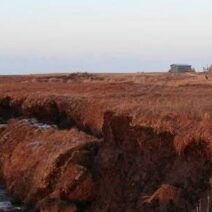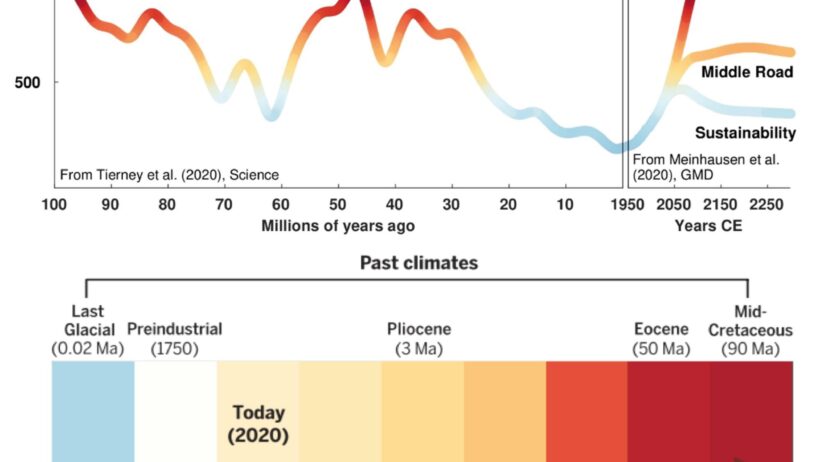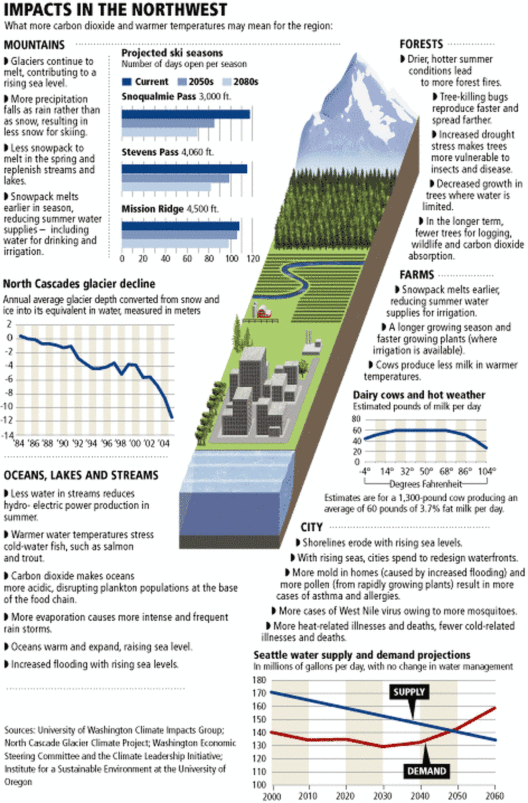As we navigate the complexities of contemporary climate change, it is essential to draw parallels with a distant past marked by dramatic climatic transformations. This exploration is more than an academic exercise; it is a vital framework for understanding the nuances of today’s global warming crisis. The echoes of past ice ages resonate within our current environmental conundrum, illuminating the intricate interplay between natural cycles and anthropogenic influences.
The Earth has undergone cyclical climatic shifts for millions of years, fluctuating between glacial and interglacial periods. These epochs are characterized by significant temperature variations, sea level changes, and shifts in biodiversity. For instance, during the last Ice Age, massive ice sheets enveloped vast regions, profoundly impacting ecosystems and human ancestors. This historical backdrop provides a crucial context for grasping the full impact of current warming trends.
One of the most compelling observations within the discourse on climate change is the rate at which contemporary temperatures are rising. Data shows a shocking acceleration compared to the slower, often millennia-long changes of previous eras. The Mid-Pleistocene Transition, which occurred around one million years ago, marked the start of glacial cycles becoming longer and the interglacial periods shorter. This system set the stage for the last Ice Age, but today’s climate dynamics deviate dramatically from these patterns.
Understanding the mechanisms that triggered past climate changes allows us to appreciate the factors now influencing global temperatures. Earth’s natural greenhouse gas cycles, primarily governed by the carbon dioxide and methane levels, have historically ebbed and flowed in response to various natural phenomena—volcanic activity, ocean circulation patterns, and solar radiation variations. However, the unprecedented spike in greenhouse gases due to human activity since the Industrial Revolution poses a different challenge. This modern era bears witness to a concentration of carbon dioxide that dwarfs levels observed over the last 800,000 years.
Deeper geological records provide further insights that illustrate the profound link between past climate events and current changes. Researchers utilize ice cores extracted from polar regions, which encapsulate atmospheric gases in layered sediments. This analysis reveals a striking correlation between carbon dioxide levels and temperature, corroborating the concept that greenhouse gases are critical to maintaining Earth’s habitable climate. This connection becomes especially pertinent when evaluating the long-term trajectory of current climate policies, which need to address the steep rise in emissions.
Another key aspect that merits discussion is the role of feedback mechanisms in the Earth’s climate system. During the last climatic optimum, natural feedback loops—such as the albedo effect of ice and snow—effectively moderated climate shifts. As ice sheets melted during warming periods, a reduction in surface reflectivity meant more solar energy was absorbed, further accelerating temperature increases. This self-reinforcing cycle highlights the precarious nature of climate stability and serves as a sobering reminder that our current trajectory could elicit similar feedback loops if left unchecked.
Moreover, the interplay between ocean currents and atmospheric conditions cannot be overstated. During various interglacial periods, shifts in oceanic currents significantly influenced global temperature patterns and regional climates. The phenomenon of El Niño and La Niña today illustrates how delicate this balance is; slight alterations in sea surface temperatures can have wide-ranging implications for weather patterns worldwide. Thus, examining these ocean-atmosphere interactions informs strategies to mitigate adverse climate outcomes.
One cannot overlook the impact of biodiversity shifts associated with climatic changes throughout history. Past interglacial periods witnessed mass migrations and extinctions as species adapted (or failed to adapt) to new environmental conditions. As the current climate warms, we are already observing shifts in species distribution, threatening delicate ecosystems and disrupting existing food chains. This precarious state is reminiscent of the past but is amplified by human encroachment and habitat destruction, exacerbating challenges for species resilience.
Furthermore, the fascination with past climatic epochs extends beyond mere scientific inquiry; it resonates on a profound level with humanity’s sense of continuity and survival. It beckons a question: how have our ancestors thrived despite cyclical cataclysms? The answers often lie in adaptability and community resilience—values that are increasingly vital in today’s climate discourse. Emulating these strategies may offer pathways to social and ecological cohesion as we confront current and future climate challenges.
Ultimately, the echoes of past ice ages serve not only as a cautionary tale but also as a blueprint for future action. They remind us that the Earth is in a constant state of flux. The lessons gleaned from epochs long gone, combined with our present understanding of climate science, could guide innovative solutions to mitigate warming effects. Interdisciplinary cooperation—merging geology, ecology, meteorology, and social sciences—shall be paramount in crafting effective responses to the myriad challenges posed by climate change.
In conclusion, appreciating the historical context of climate change invites a more profound understanding of our planet’s climate system. By examining the interplay of natural cycles, anthropogenic impact, and species adaptability, we can foster a comprehensive approach. The task ahead is daunting, but the knowledge gleaned from ‘Ice Age echoes’ provides a glimmer of hope, reminding us that through awareness and action, we can shape a sustainable future amid the tumultuous changes ahead.






